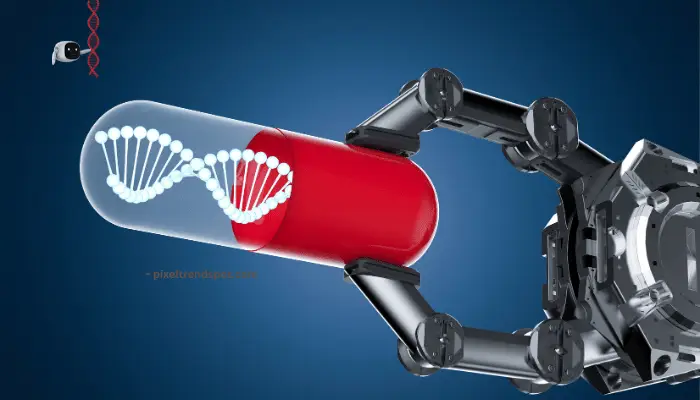AI Model DeepPBS Revolutionizes Protein-DNA Binding Prediction for Drug Discovery
Researchers from the University of Southern California introduced a new AI model which promises to revolutionize research on proteins-DNA interactions. This cutting-edge tool, DeepPredictor of Binding Specificity, uses geometrical deep learning in order to accurately predict how proteins bind DNA. It accelerates drug discovery and medical treatment development. DeepPBS has the potential to speed up the design of new drugs and advance the treatment of cancers, genetic disorders, and other diseases.
The role of protein-DNA binding in Molecular Biology
The binding of proteins to DNA is an important mechanism in cells that regulates gene expression. It is possible to predict with accuracy how proteins bind DNA, which can lead to advances in genetic therapy, synthetizable biology and drugs development. To determine binding specificity, however, labor-intensive methods like high throughput sequencing or structural biological experiments have been used. DeepPBS aims to eliminate these bottlenecks through a more efficient and faster computational alternative.

Geometric Deep Learning: How DeepPBS works
DeepPBS uses a geometry deep learning framework to analyze 3D structure of protein-DNA complexes. It can then predict binding specificity. DeepPBS provides a more accurate and detailed analysis than many other models by capturing chemical properties as well as geometric contexts. Researchers can enter data about protein-DNA complexes in the system. The system then produces predictions regarding binding accuracy. This helps identify potential therapeutic targets.
DeepPBS is unique in that it can be applied universally to a wide range of protein families. DeepPBS is able to predict interactions across a broad range of proteins, unlike earlier models which were limited to specific families. This versatility is an advantage for researchers who work with proteins from different fields, such as synthetic biological genetics and Biotechnology.
The Legacy of Protein Structure Prediction
DeepPBS is a continuation of DeepMind’s AlphaFold which revolutionized the prediction of protein structure with highly accurate models. DeepPBS enhances AlphaFold by focusing more on specificity than structure prediction. DeepPBS is able to predict binding interactions for proteins that lack experimental structural data. This makes it a useful tool for researchers who are studying proteins without much information.
This capability can significantly accelerate the development and testing of new therapies in particular areas like genetic mutations cancer treatment and research on RNA. DeepPBS can help to improve the efficiency and precision of designing drugs that target DNA-binding protein implicated in genetic disease.
DeepPBS applications in medicine and biotechnology
There are several important applications of accurately predicting protein-DNA interactions:
- Drug Discovery By predicting the interaction of drugs with DNA-binding protein, DeepPBS could help identify new drug candidates and reduce the time and costs involved in drug development.
- Genetic Disease Treatements In the case genetic mutations understanding how proteins bind DNA can assist in the design and development of gene therapy that corrects faulty interactions. DeepPBS offers insights into these interactions and facilitates the development of targeted treatment.
- Cancer Research : Many cancers are caused by dysregulated interactions between protein and DNA. DeepPBS is able to help in understanding these interactions, and the design of molecules which could modify or inhibit these processes.
- Synthetic Biodiversity: DeepPBS is a tool that can predict the interaction of designed proteins with DNA in synthetic biology. This allows for a functional test before any experimental testing.
Using methods that go beyond the traditional
While accurate, traditional methods of studying protein-DNA interactions, such as X-ray Crystallography and NMR spectroscopy are time-consuming and labor-intensive. High throughput sequencing requires large datasets, and can still fail to predict interactions in proteins that lack structural information. DeepPBS is a major departure from existing approaches. It offers a scalable, efficient solution to understanding and predicting specificity of binding.
DeepPBS is able to predict accurately because it can understand geometrical features in molecular complexes, in a manner that mimics the way proteins interact with DNA within the human body. This is important for applications that require precision, like the development of customized medicine and treatments that target specific genetic pathways.
Future Implications & Ethical Considerations
DeepPBS represents a major leap in molecular science, comparable to Francis Crick’s and James Watson’s 1953 discovery of the DNA structure. DeepPBS, which bridges the gap between computational biochemistry and medical applications, will become more important as technology advances.
But with these great advances come ethical concerns. Ethics are important to consider as AI models such as DeepPBS become more and more central in research. This includes ensuring transparency in AI models, bias of data for training AI systems and privacy genetic information. Researchers should be aware of the ethical implications when using such tools, particularly when working with sensitive biological information.
The conclusion of the article is:
DeepPBS is a major advance in AI driven molecular biology. It offers researchers a faster and more efficient way to determine the specificity of protein-DNA interactions. DeepPBS, which leverages geometrical deep learning to build on previous advances in protein structure predictions, has the potential of having a significant impact on drug research genetics and Biotechnology. DeepPBS, a tool that integrates AI with biological sciences will help to develop innovative treatments and provide a better understanding of life on a molecular scale.